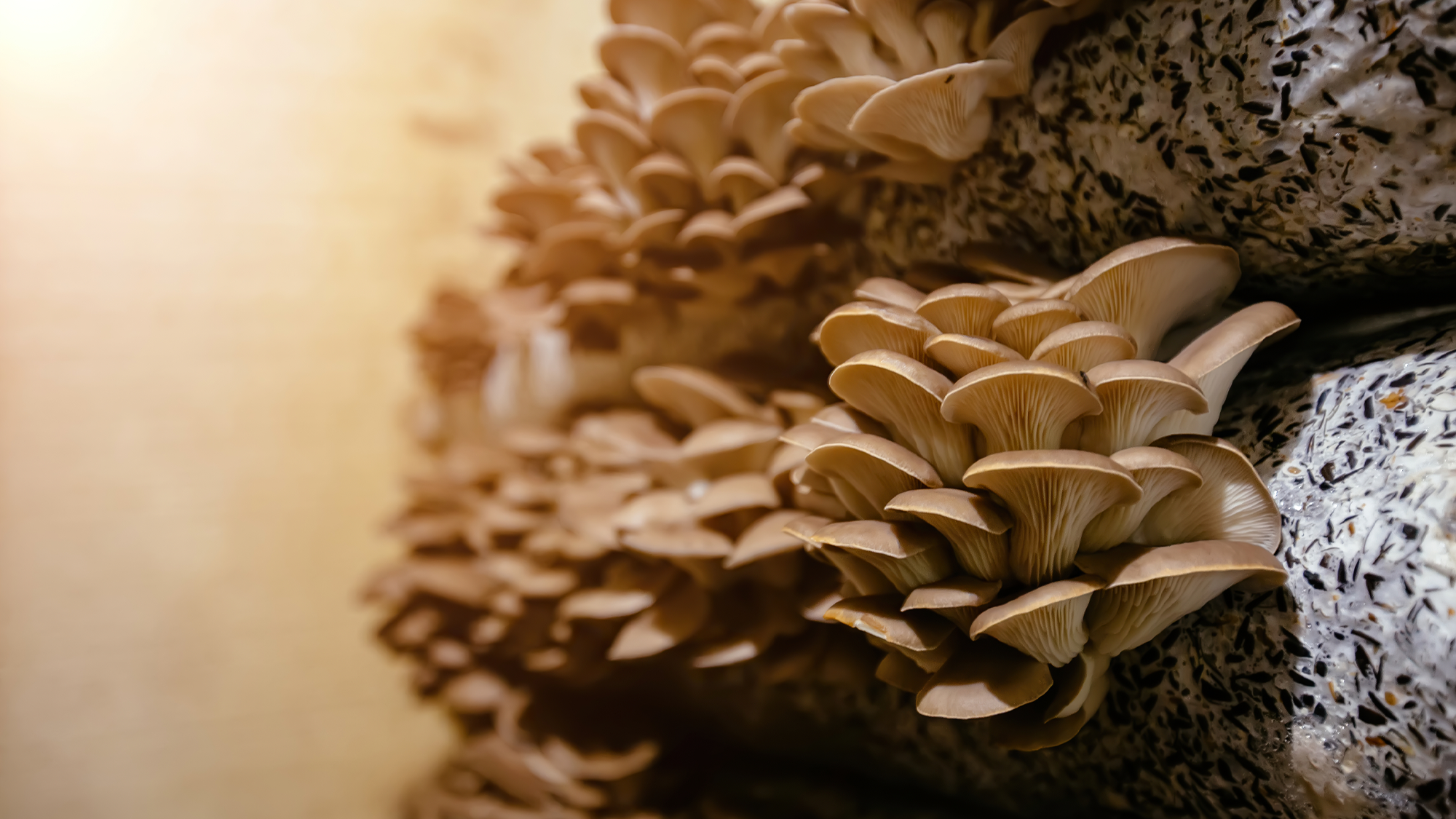

With the gruesome debut of shroom zombies in HBO’s The Last of Us, it’s been a big week for killer fungi—and even the real-life oyster mushroom is getting in on the fun. These briny fungi go well on salads and burgers, but before we can eat the mushrooms, they eat nematodes. The microscopic roundworms, one of the most abundant lifeforms on Earth, are a favorite oyster mushroom snack.
Although they don’t turn the nematodes into zombies, oyster mushrooms violently attack and eat their prey. A study published January 18 in the journal Science Advances found that they use a nerve gas to poison and paralyze nematodes and then slurp out the insides.
[Related: Soil fungi are spreading lung infections to new territories.]
What we think of as mushrooms are part of a fungus’s reproductive structure, also called a fruiting body. Oyster mushrooms are the spore-filled reproductive structures of a fungus called Pleurotus ostreatus. In 2020, study author Yen-Ping Hsueh and her team from Taiwan’s Academia Sinica found that P. ostreatus has a tiny, lollipop-shaped structure within the mushroom. When nematodes pass against the fungus, the lollipop structures break their heads open, releasing a highly toxic nerve gas.
“They really paralyze the worms within a minute,” Hsueh, a microbiologist, told The New York Times in an interview about the new study and her work with fungi. “It’s very dramatic.”
In a lab, Hsueh and her colleagues further investigated the “nerve gas in a lollipop” strategy by exposing four different species of worms to the chemical. The nematode bodies failed catastrophically, as the normal flow of ions across their cell membranes were disrupted. The toxin triggered a huge influx of calcium ions into their nerve and muscle cells, leading to paralysis and death.
In the new paper, the team induced random genetic mutations in the fungus and saw that the mutants that lacked lollipop structures were no longer toxic to the nematodes. This confirmed the role of the lethal bulbs or toxocysts.

They then analyzed what was within the lollipop structures of non-mutant oyster mushrooms and found a chemical called 3-octanone. This is a relatively common compound in fungi and plants, and, because it easily evaporates, it is a frequently used ingredient in fragrances and flavors.
[Related: These fungi demand more pumpkin in their pumpkin spice lattes.]
The toxic lollipop structures are found on the fungus’ familiar long structures, called hyphae, that grow inside rotting wood. On the hyphae are hanging balls, known as toxocysts, that contain the 3-octanone. When the fungus kills its prey, the hyphae suck out whatever is inside the nematode’s body. According to the team, this might be a way for the fungus to absorb nitrogen in environments that lack the nutrient.
Future studies may reveal what environmental and physiological factors influence the development of the toxocysts. This could help scientists understand how to use it at a pesticide, because worms like nematodes can kill the roots of crops. Ivermectin, an anti-parasite and worm drug that made headlines earlier in the COVID-19 pandemic, was inspired by nature to fight river blindness. Oyster mushrooms won’t be used as a pesticide right away since the 3-octanone toxin is so volatile and oyster mushrooms appear to make toxocysts in nitrogen-starved environments.
However, one immediate development is that the oyster mushroom may not be considered a truly vegan food—because they eat nematodes.
